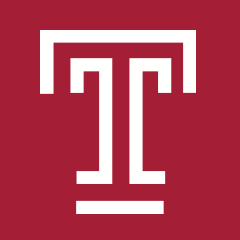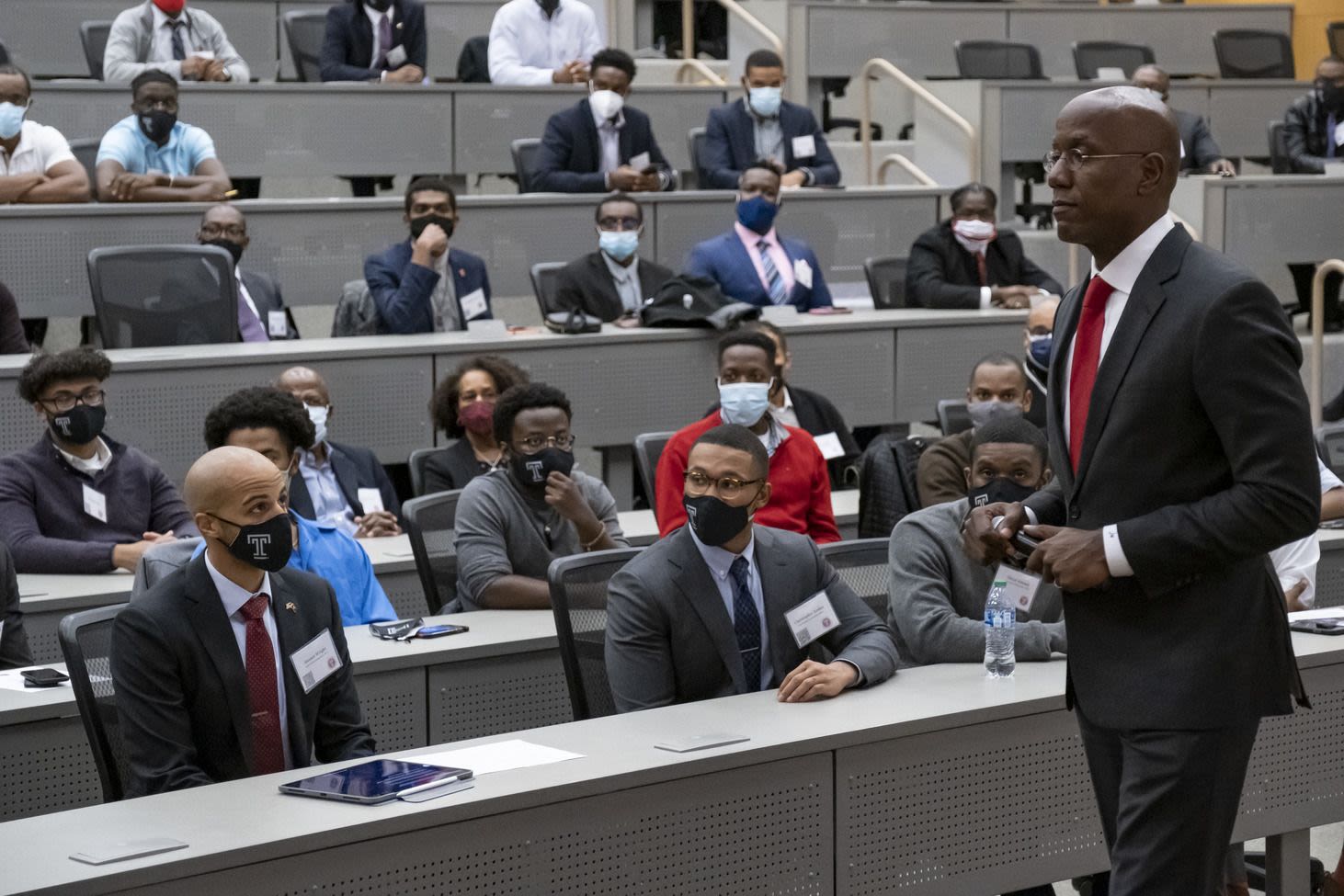An incredible focus on POCUS
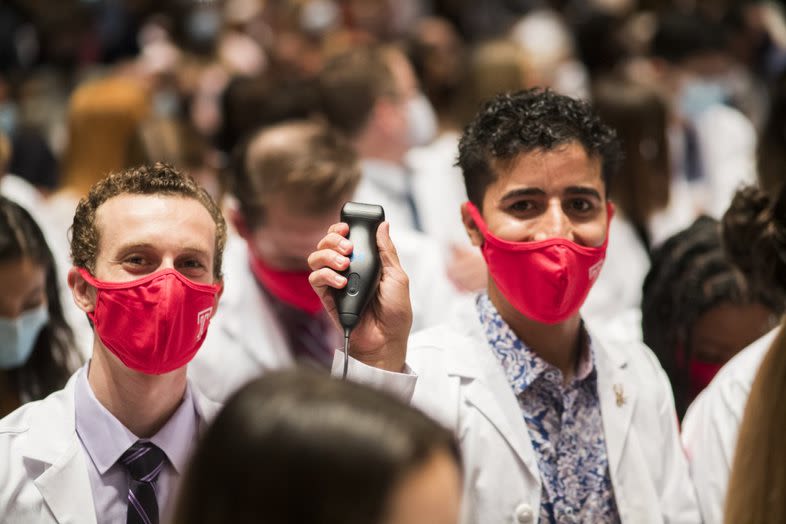
Every Katz School of Medicine student in the classes of 2024 and 2025 has received a lightweight, pocket-sized ultrasound device that will increase the speed and ease of their diagnoses.
Experts predict that a technology called POCUS will transform the practice of medicine.
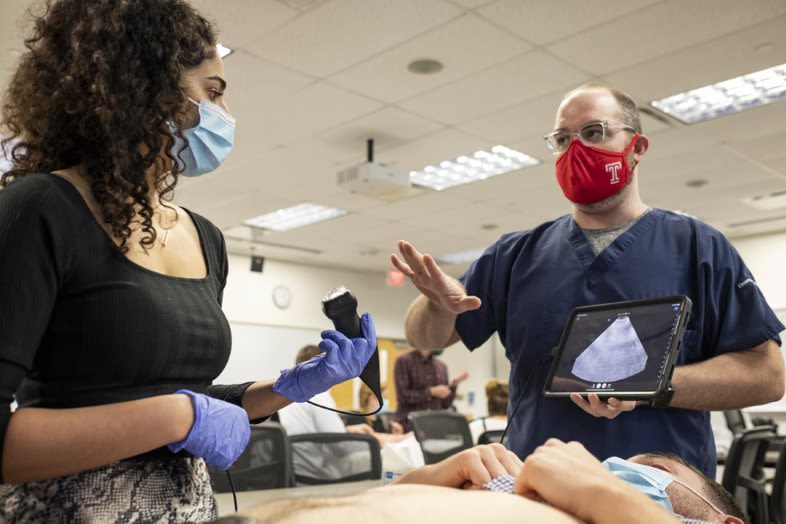
And, in a first for medical education in the eastern United States, the Lewis Katz School of Medicine at Temple University has supplied the technology to every medical student in its classes of 2024 and 2025 within the same academic year.
POCUS, or point-of-care ultrasound, is a lightweight, pocket-sized device that pairs with a specially programmed smartphone or tablet, creating a stethoscope with eyes. Quickly and simply, it produces images of structures inside the body in real-time.
"Just like the stethoscope fundamentally reshaped medicine over two hundred years ago, POCUS is quickly becoming integral to medicine—and we are among the first in the country to teach students to use it," said Amy J. Goldberg, interim dean of the Katz School of Medicine.
With POCUS poised to revolutionize the speed and ease of diagnosis in any setting, Goldberg made it a priority for medical students as soon as she was named interim dean last spring. A priority not just to teach it to them but to get POCUS into their hands individually—just as each student owns a stethoscope.
A trauma surgeon, Goldberg relies on POCUS in the trauma bay. “We use it to assess internal injuries, to determine if we need to get a patient into surgery immediately. I cannot imagine working without it," she said.
Soon, no physicians will.
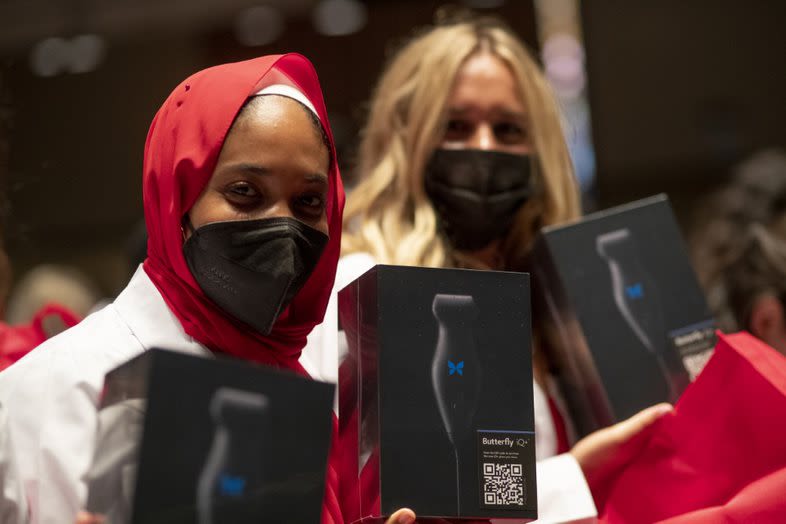
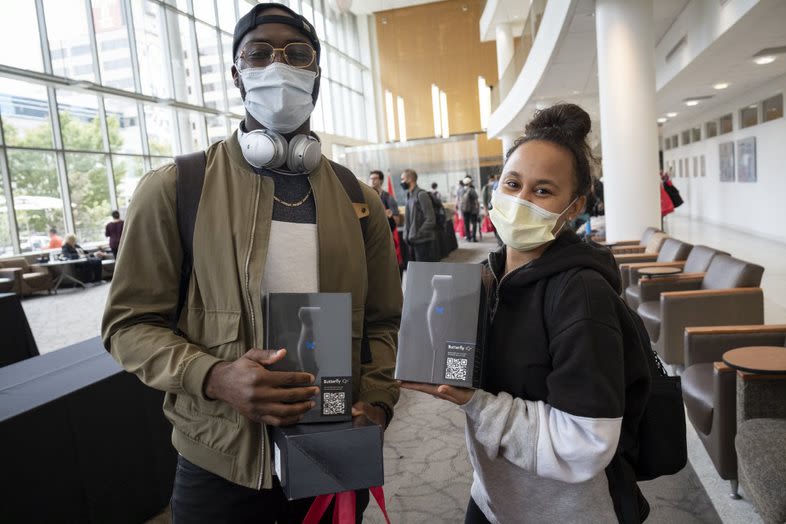
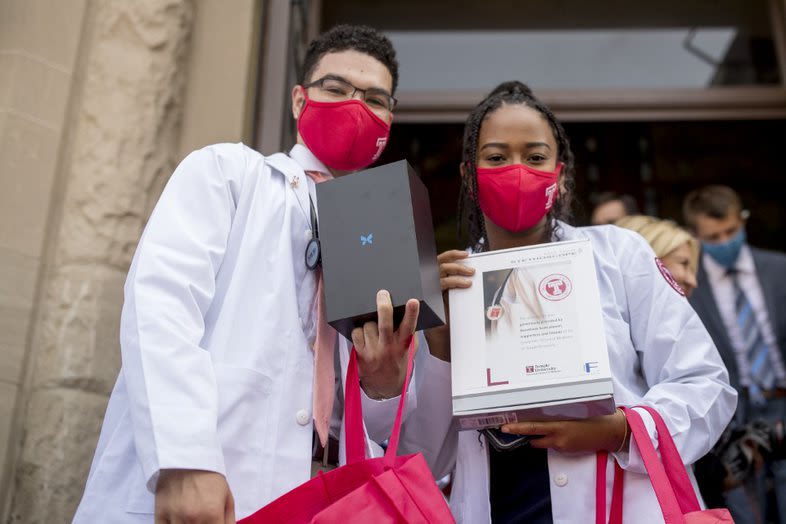
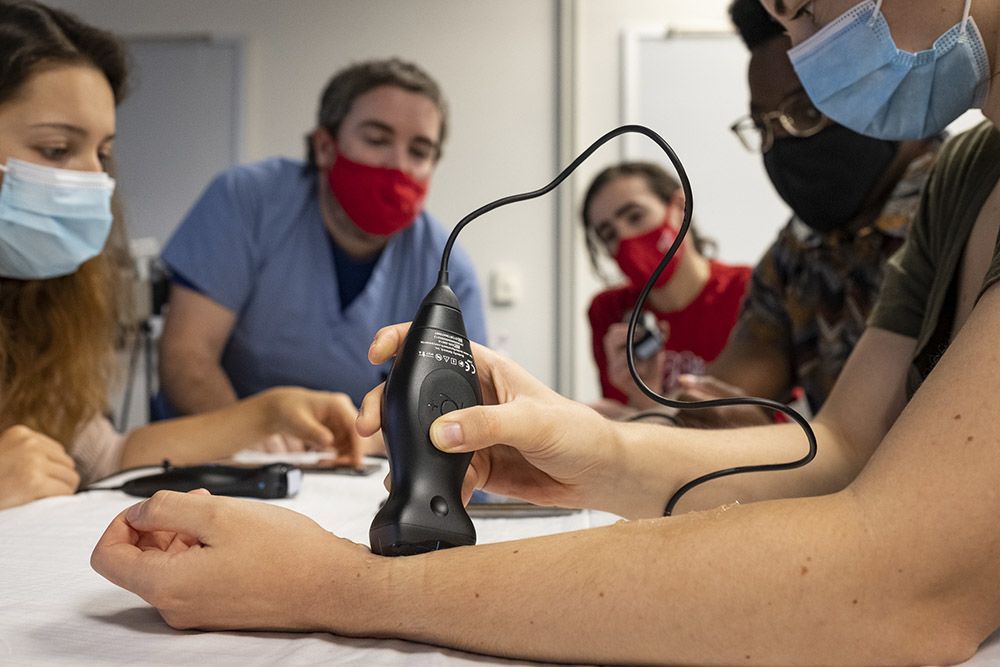
Tiny and transformative
Ultrasound uses sound waves to create two-dimensional images of internal anatomy. Until now, ultrasound scanners were large, stationary pieces of equipment. But now, POCUS—portable and small—makes scanning immediately available in any setting, speeding patient assessment and treatment planning.
To use it, the clinician connects the device to a specially programmed smartphone or tablet, then glides the lightweight device across a patient's skin. Instantly, what's inside the body appears on-screen—revealing possible abnormalities to a trained eye.
The POCUS devices owned by Temple students (Butterfly IQ+ devices) incorporate six imaging modes and 21 presets for visualizing nearly every bodily structure from the bladder to the heart and lung.
“With such broad utility and ease of use, POCUS is going to transform daily clinical practice across every medical specialty—so we're making sure our students graduate with this essential competency,” Dean Goldberg said.
The patient-care benefits of POCUS are compelling—but for Dean Goldberg, the real focus of POCUS is teaching and learning medicine.
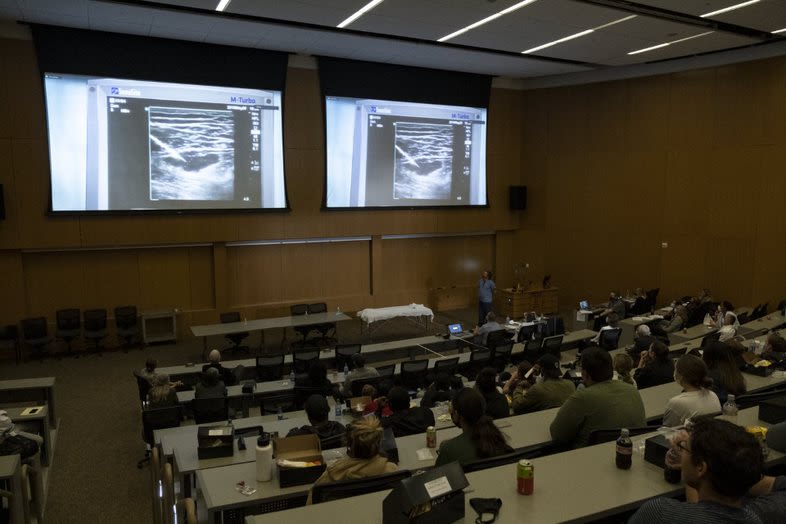
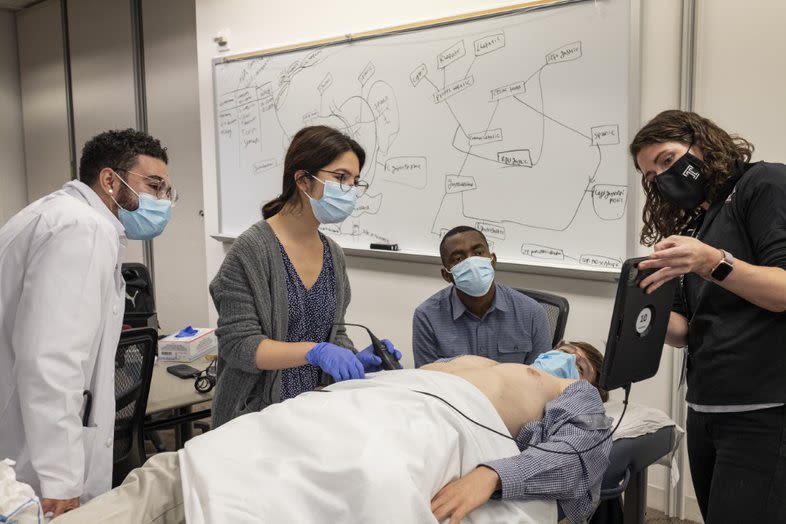
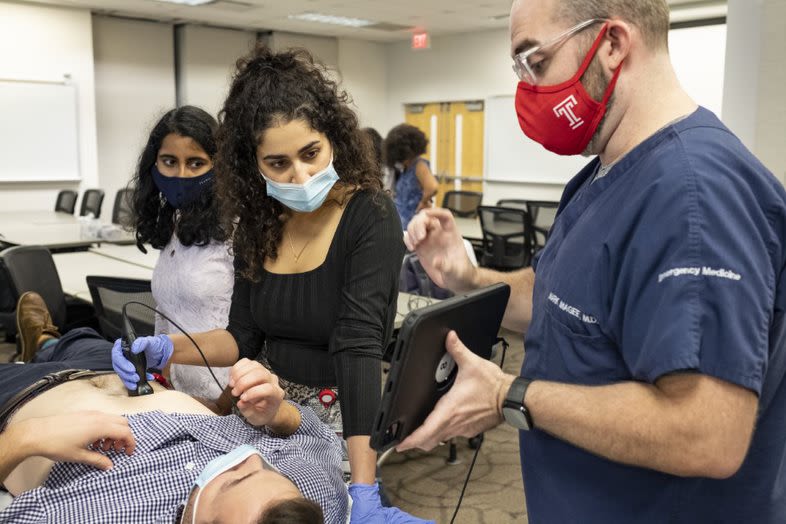
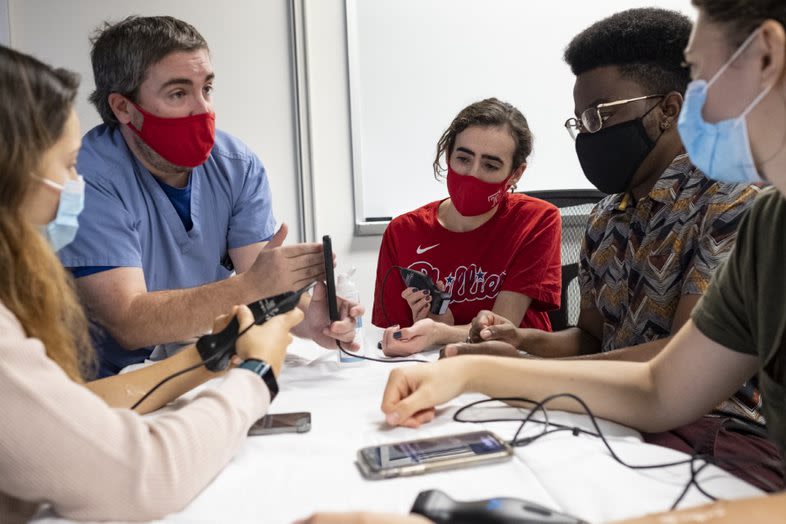
POCUS focus
Temple is one of a small handful of medical schools across the country using POCUS to enhance student learning of fundamental knowledge and clinical skills," said Ryan Gibbons, MED ’06, director of the Katz School of Medicine's curriculum for ultrasound in medical education.
“POCUS helps us double down on what we’re teaching in anatomy and physiology," he said. “We can show students the heart, lungs and other organs functioning in real-time.”
An alumnus of the school and professor of emergency medicine, Gibbons said the POCUS curriculum at the Lewis Katz School of Medicine is among the most robust in the country. “Dean Goldberg wants us to be a regional and national pacesetter in POCUS and we are,” Gibbons said.
And the secret power of the program was getting POCUS devices into every first- and second-year medical students' hands, one-to-one. The students own the devices, take them everywhere they go.
The Class of 2025 received their devices as a surprise during their White Coat Ceremony in August—a gift made possible by the philanthropy of E. Ronald Salvitti, MED ’63, an alumnus and longtime volunteer school leader and benefactor. It thrilled him to see it.
It also thrilled Temple University's new president, Jason Wingard.
“One of the things that attracted me to Temple is its status as best-of-class in education, research and health," President Wingard said, calling the POCUS devices a path-breaking gift that will introduce our medical students to advanced medical imaging as they begin their coursework, creating a solid foundation for them to become leaders and innovators in medicine.”
Two months later, Dean Goldberg arranged for the medical school to purchase POCUS devices for the Class of 2024—making Temple the only medical school in America to give two classes individual POCUS devices during the same academic year.
“In addition to equipping students with knowledge and skills to make them better doctors, ultrasound competency will give Katz School of Medicine graduates a competitive edge on the day they graduate—as most physicians don't learn POCUS until residency training,” Dean Goldberg said.
“You hold the future in your hands,” she told the students. “The classes of 2024 and 2025 at the Lewis Katz School of Medicine will graduate with this essential competency.”
Second-year student Civanni Moss is grateful. "With POCUS, you can take the differentials further, really see what's going on with a patient. Plus, learning how to use ultrasound now—in medical school—will definitely prepare us for the future. It’s a leg up in our careers."
Keneolisa Ogamba, another second-year student, said the whole initiative “shows Temple’s commitment to creating the best physicians possible. Hopefully, other schools can get on board,” he said.
Their classmate Sam Panich thinks the technology “is incredibly useful in day-to-day patient care. The visual information it supplies definitely supersedes what's possible to determine with just a physical and history,” she said. “Plus, to actually hold a device in my hand and say that it's mine is an incredible feeling.”
Incredible history
Someone else at Temple who thinks POCUS is incredible is Marvin Ziskin, MED ’62, an alumnus and emeritus professor at the school.
He was present to see the Class of 2025 get their devices. "What a feeling," said Dr. Ziskin, an ultrasound pioneer whose lab made the cover of Life magazine in 1965.
Ultrasound was a revolutionary development: imaging without radiation. Safe. It spread like wildfire across medicine.
Dean Goldberg calls Ziskin "a giant in the field. He made diagnostic ultrasound possible and made Temple a birthplace."
“He served on the national committee that prepared the official books on its biological effects, headed the world's two most important ultrasound organizations, helped edit the two leading journals in the field, developed the standardized terminology—and in 1971 led the international survey that proved no adverse effects of ultrasound after 292 institute-years of use,” Dean Goldberg said.
The students were amazed to meet Ziskin and thrilled to hold their own POCUS devices in their hands.
"It is rare that a technology this bold comes along. It’s a sea change for medicine,” Dean Goldberg told the students. “The ultrasound wave is rolling in—and you are riding its crest.”
